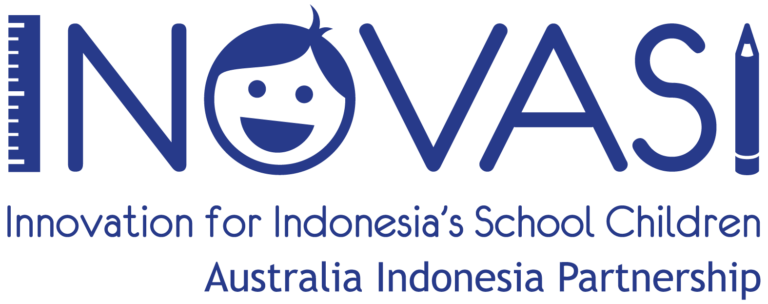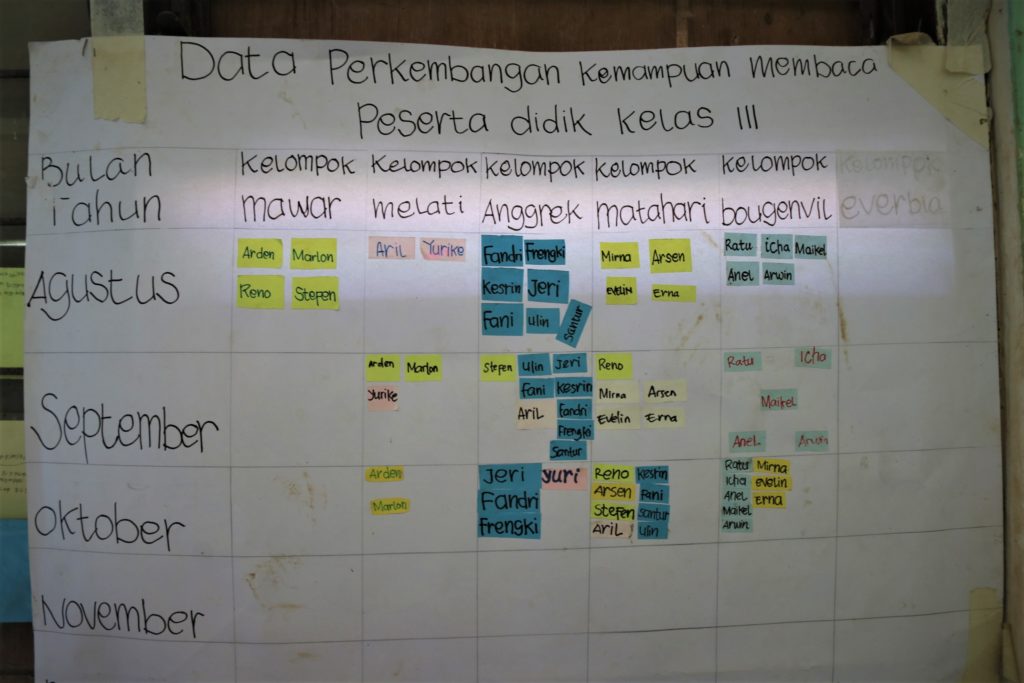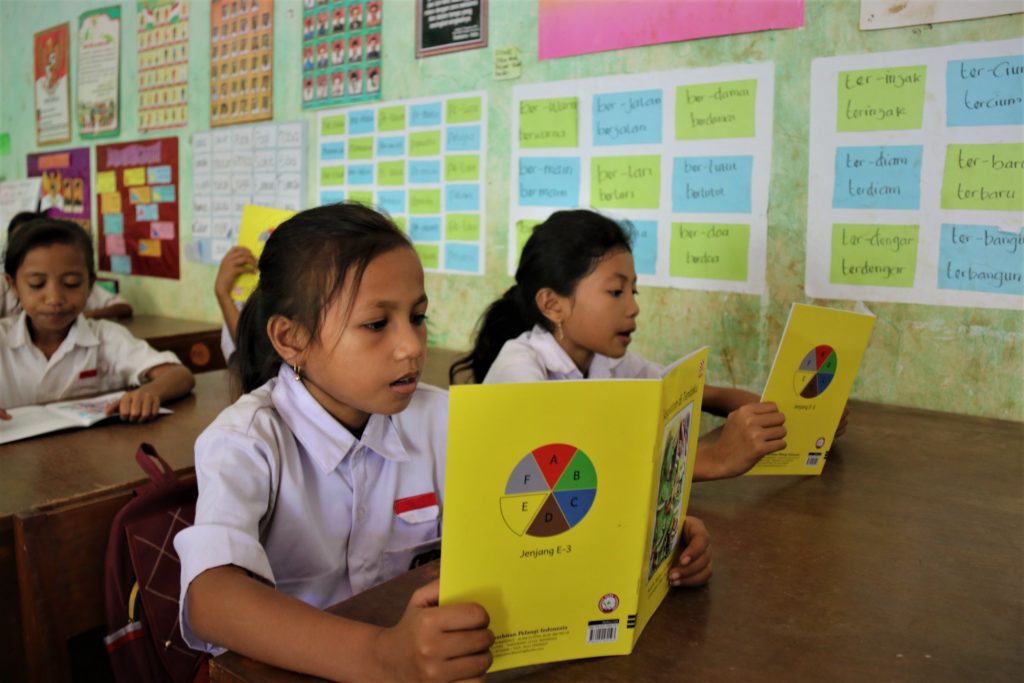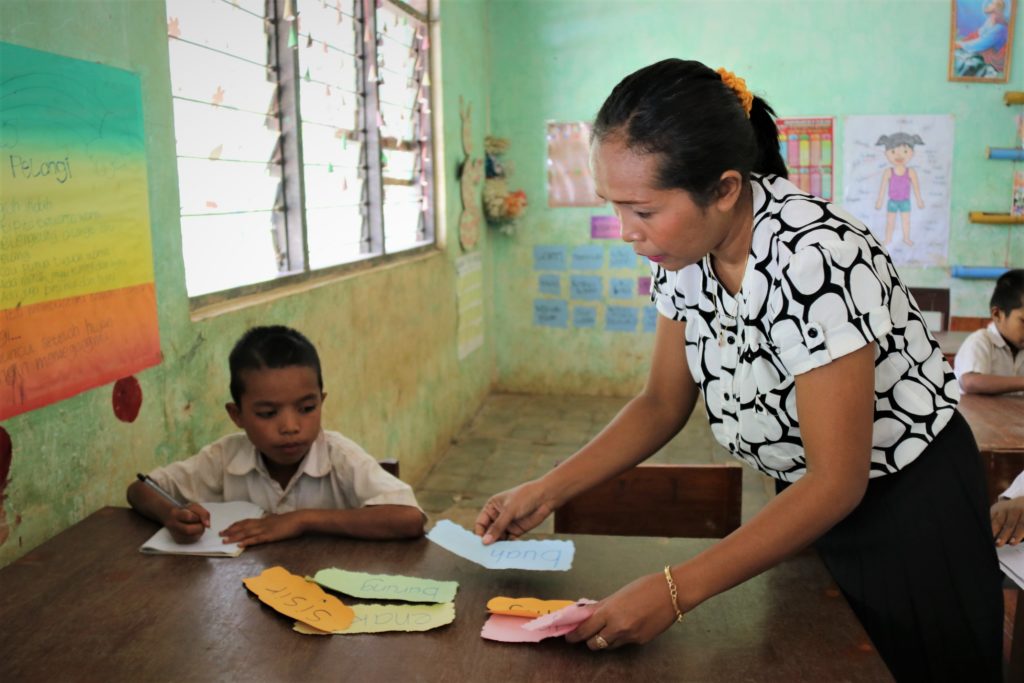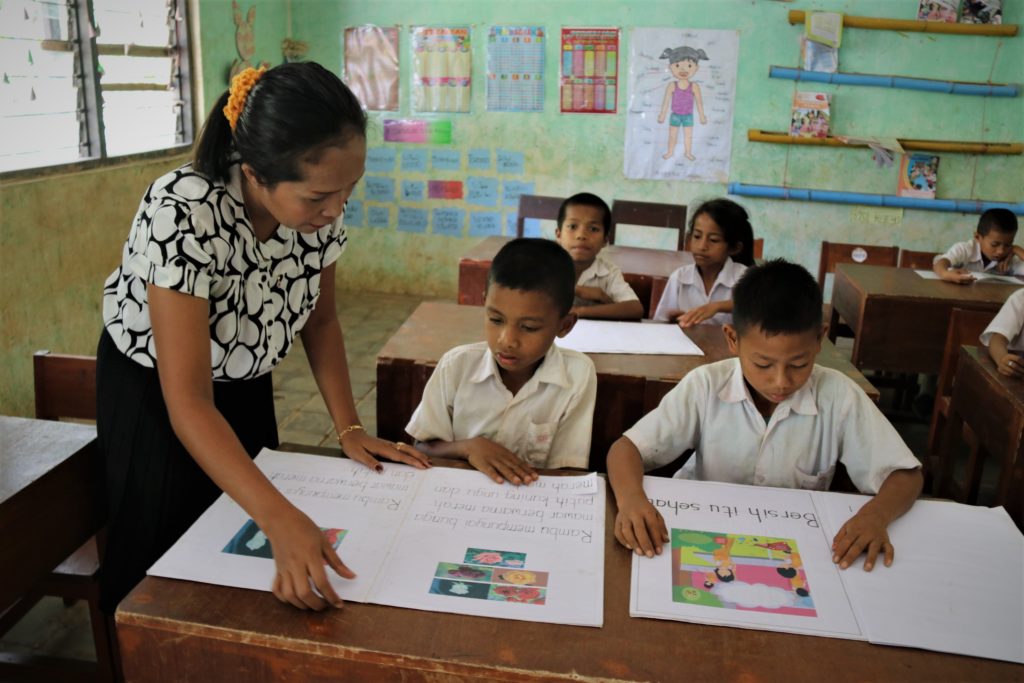
Students in grade three of elementary school are expected to be able to read fluently. In reality, there are still students who don’t know all the letters of the alphabet or who read by spelling the letters. This was discovered by Antonia Kallu Ate, a grade 3 teacher at SDN Wee Lalaka state elementary school in West Sumba regency, East Nusa Tenggara (NTT). Antonia discovered this after conducting a formative test using an instrument developed by INOVASI, a partnership program between the Australian and Indonesian governments. The test results indicated that there were four students whose reading level was still at spelling letters.
“Maybe it’s because all this time, the students were reading out loud as a class together. So, I just assumed that all my students could read,” explained Antonia, who is more commonly known as Nia.
Based on the test results, Nia grouped her students according to their reading ability and created learning scenarios for each group. One of the learning strategies she implemented was guided reading, which she now does twice a week.
During this activity, Nia guides only the group of students who can fluently read words and syllables, and, of course, the four students who are still spelling letters when they read. These groups alternately receive assistance. For example, the first day is for the fluent reading group, while the second day is for the word reading group. Meanwhile, the reading comprehension group is given reading material and some questions to answer after reading a book. Before the students start reading, Nia first shows them how to read the story by paying attention to punctuation marks and expressions.
“The children who can read a little bit are selected to read the story by taking turns, meanwhile the others read together. After that, I correct the students’ reading mistakes,” says Nia.
The books used in this activity are tiered books provided by INOVASI. In addition to these books, Nia uses the Big Book (a large story book), which she made herself. She usually uses the Big Book for the word reading group; she gives word cards to the students who are still at the syllable reading level.
When the students encounter difficult words in their reading, Nia uses these words as study materials, such as turning them into word cards, and distributing them to students to learn. Through this guided reading activity, Nia admits that she is able to better understand the progress of her students’ abilities.
She notes, “I can tell the reading ability of each child, and I can guide them to understand the reading material. For example, after a student has finished reading a story, I ask questions related to the content of the story. I prepare these questions beforehand.”
Nia says that this type of learning creates a fun learning atmosphere. The students have even become reluctant to return to the traditional sitting position after their guided reading activity. The interaction among students has also improved. Based on her observations, the students in the fluent reading group and in the reading comprehension group exchange books after both groups have finished reading the books. The students also share stories about the content of the books.
The improvement in the students’ reading skills is also obvious. Just a month after starting this activity, the students who were still spelling letters moved up to the level of reading syllables. Nia hopes that books that support the students’ reading activities can be added on an ongoing basis; currently, there are still students who do not get books during the guided reading activity.
Nia explains, “There are already books available, but not enough. For example, for a group of six children, only two copies are available.”
